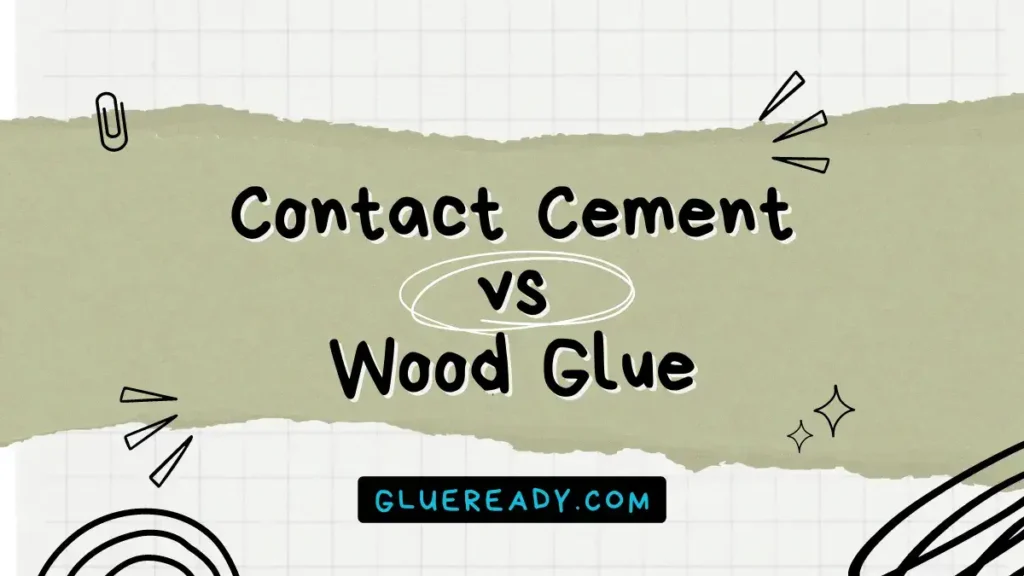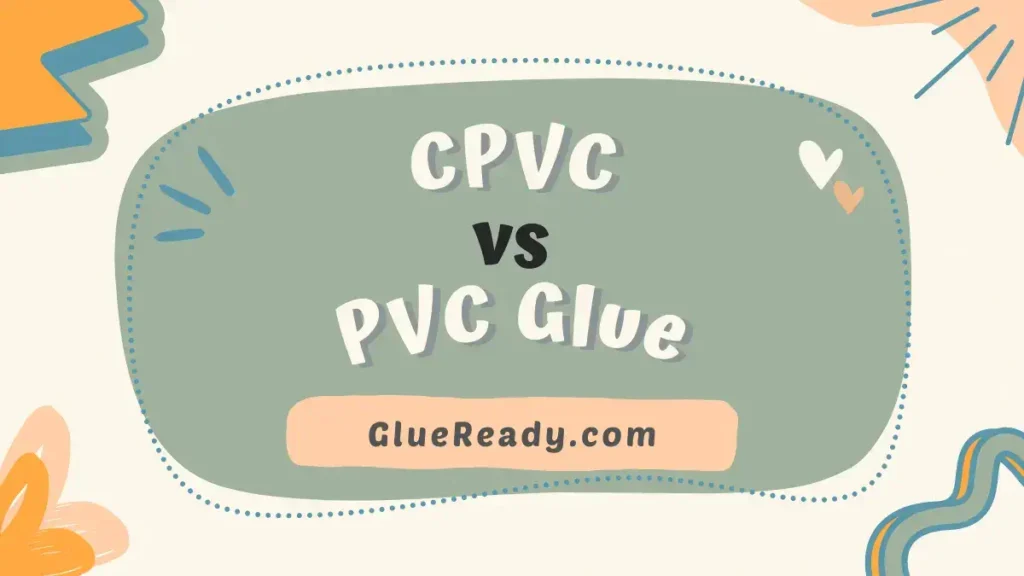Barge Cement vs Contact Cement | What’re the Differences?

Barge cement and Contact cement are both adhesives that serve a variety of purposes.
The main distinction between barge and contact cement is the glue-like consistency of barge cement. Additionally, contact cement is a solvent-based bonding substance which appears in a watery form.
In this article, I will help you to find the differences between them by comparing barge cement vs contact cement.
Read More: Barge Cement vs Shoe Goo
Understanding Barge Cement
Barge cement is an industrial-grade glue that is used for sealing, waterproofing, and bonding materials like plastic, glass, rubber, wood, leather, vinyl, and polyvinyl chloride.
It is a popular formula for contact cement and is ready for use on many kinds of materials.
It is often used in the leather craft market as a leather glue and contact cement.
Barge cement is a water-soluble and chemical-free adhesive that can be used on both porous and non-porous surfaces.
It has a high initial tack and a long open time, which means it can be repositioned before it dries completely.
It creates a flexible and permanent bond that can withstand weathering, water, heat, and oil.
Barge cement can be applied with a brush, roller, or spray gun.

Understanding Contact Cement
Contact cement is a type of adhesive that is used for bonding porous and non-porous material together.
It is ideal for use when the bond needs to adhere to surfaces that have round or irregular shapes.
It is commonly used for laminating countertops, attaching veneers, or repairing rubber soles.
Contact cement is a solvent-based or water-based adhesive that has a low viscosity and a fast-drying time.
It works by creating an instant bond when two coated surfaces are pressed together. It does not require clamping or curing and can resist high temperatures and moisture.
Contact cement can be applied with a brush, roller, or spray gun.

Know More: Rubber Cement vs Contact Cement
Barge Cement vs Contact Cement Comparison Table
| Feature | Barge Cement | Contact Cement |
| Appearance | Glue-like | Watery |
| Adhesive quality | Strong | More powerful |
| Durability | High | Long shelf life |
| Toxicity | Low (TF version) or high (original version) | High |
| Drying time | Long (several hours) | Short (minutes) |
| Underwater usage | High (sets when submerged) | Low (not feasible) |
| Bonding flexibility | High (can be repositioned or removed) | Low (cannot be repositioned or removed) |
| Bonding strength | High | Very high |
| Usage | Large projects, handcrafts, DIY projects, leathercraft, etc. | Quick repairs or small joints of bonds |
Comparison Between Barge Cement and Contact Cement
Here are some of the main differences between barge cement and contact cement:
Composition
Barge cement is a water-soluble adhesive that does not contain any harmful chemicals or solvents.
Contact cement is either a solvent-based or water-based adhesive that may contain volatile organic compounds (VOCs) or formaldehyde.
Application
Barge cement has a longer open time than contact cement, which means it can be adjusted before it sets.
Contact cement has a shorter open time than barge cement, which means it bonds instantly when two coated surfaces are joined.
Performance
Barge cement creates a flexible and permanent bond that can withstand weathering, water, heat, and oil.
Contact cement creates a rigid and permanent bond that can resist high temperatures and moisture.
Cleanup
Barge cement can be cleaned up with water while it is still wet. Contact cement can be cleaned up with mineral spirits or acetone while it is still wet.
Safety
Barge cement is safer to use than contact cement as it does not emit any harmful fumes or odors.
Contact cement may emit toxic fumes or odors that can cause irritation to the eyes, skin, or respiratory system.
Choosing Between Barge Cement and Contact Cement
Selecting between Barge Cement and Contact Cement depends on the specific requirements of your project. Consider the following factors to make an informed decision:
Materials
Barge Cement is an excellent choice for leather, rubber, and fabrics, while Contact Cement is suitable for a wide variety of materials, including metal, wood, and plastic.
Flexibility
If your project involves flexible materials that will experience movement, Barge Cement’s flexibility might be more appropriate.
Speed
If you need a quick bonding solution, Contact Cement’s rapid drying time might be advantageous.
Ventilation and Environmental Impact
If you prioritize environmental friendliness and minimal exposure to harmful fumes, water-based Contact Cement might be a better option.
Precision
Barge Cement allows for precise application with a brush, while Contact Cement’s application process involves coating both surfaces.
Frequently Asked Questions (FAQs)
Is Barge Cement Contact Cement?
Barge cement is a type of contact cement, but not all contact cement are barge cement.
Barge cement is a specific brand name of contact cement that has a water-soluble and chemical-free formula.
Contact cement is a general term for any adhesive that bonds two surfaces together when they are pressed.
Contact cement can be either solvent-based or water-based and may contain different chemicals or solvents.
How Good Is Barge Cement?
Barge cement is a good product that can be used for many kinds of projects that require a strong and durable adhesive.
It is a very good adhesive that can be used for a wide range of materials, such as leather, rubber, plastic, wood, metal, glass, and vinyl.
What Is Another Name for Contact Cement?
Another name for contact cement is contact adhesive, which is a term that describes any adhesive that bonds two surfaces together when they are pressed.
Contact cement is also sometimes called neoprene glue, which is a type of contact cement that contains latex.
Final Thoughts
Both barge cement and contact cement have their strengths and are valuable tools in the realm of adhesives.
Your choice should be guided by the specific demands of your project, including the materials involved, flexibility requirements, timeline, and environmental considerations.
Hopefully, this barge cement vs contact cement comparison has helped you in that matter.








Dear Barge, I’ll be doing a project that includes 3 pair of work boots. I’m going to remove the steel toes from the top of the boots, and then insert leather swatches to ‘fill in’ the cuts. Before these 3 pair, I’m going to try using ‘Loctite’ brand adhesive on a trial pair of boots. I’m not anticipating good results, so I’mm wondering where I can purchase your product. I live in Waukesha Wi. The care and stay well, Rudy Patek